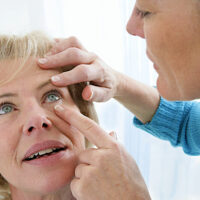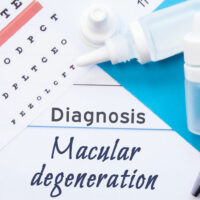Avoid These 7 Food Items to Manage Diabetes

Diabetes is currently one of the most common metabolic diseases worldwide. According to experts, nearly 422 million people live with this condition. Over time, the number is only expected to increase. It is a chronic condition characterized by excessive levels of blood sugar. Though the condition has no definite cure, it can be kept at bay by following healthy nutritional habits. Keep reading to find out foods that are considered unsafe for diabetes patients.
Foods to avoid for managing diabetes
Living with diabetes means making significant adjustments to the daily meal plan. Many foods that were once a favorite of a patient should be sidelined. Some food items often considered healthy can harm a person diagnosed with diabetes. Some foods that are best avoided while dealing with diabetes are listed here.
Processed meat
Processed meat is preserved meat that undergoes various preservation methods like smoking, curing, salting, or chemical preservatives. Such foods include bacon, ham, salami, beef jerky, etc. Since chemicals are often used to enhance preservation, it is advised to avoid preserved meat, even by individuals not diagnosed with diabetes.
Instead of processed meat, it’s advised to try out natural and lean meat alternatives like chicken, tuna, and turkey. You can also eat eggs, especially hard-boiled ones as their high protein content makes them a safe alternative for diabetes patients.
White carbohydrates
People with diabetes should eat fewer white carbohydrates. The main reason why diabetes patients should avoid white carbohydrates is that they have less nutritional value and also lacks fiber. White carbs are commonly present in bread made of flour, pasta, and rice. As fiber can reduce sugar absorption and keep your blood sugar level in check, it’s important to eat fiber-rich food. It helps carbs to break into sugar slowly. So, instead of white carbohydrates, you can try healthier alternatives like brown rice, quinoa, whole-grain bread, etc.
Full-fat dairy products
Full-fat dairy products can be a significant source of high calories. They can interfere with insulin response and cause blood sugar levels to spike. Such products are also a rich source of saturated fat. It can affect a patient’s overall health and cause mass gain. So, it’s best to avoid the same. This is why it’s advised to choose low-fat dairy products instead of full-fat dairy. Some examples of low-fat dairy products are soy milk and almond milk. It is also advised to check the back of your milk carton for any unhealthy ingredients, including sweeteners.
Dried fruits
Dried fruits may taste delicious, but it isn’t worth having if you have diabetes. It is especially applicable to the ones that have sugar in them. You must not eat dry fruits like raisins, which are high in sugar. According to studies, about 43 grams of raisins can have as much as 25 grams of sugar, which is high. Unlike raisins, dry fruits like dates are also a big no-no for people with diabetes. A 50-gram pack of dates can have as much as 25 grams of sugar. One can replace dried fruits with fresh fruits like oranges and grapefruits. Not only are they delicious, and they can also be eaten as a quick on-the-go healthy snack whenever you want.
French fries
Potatoes are a foe for people with diabetes due to their starch content. But, when it comes to dishes like french fries, it’s best to avoid them altogether. It is because it’s not just the starch that affects the blood sugar but also the saturated fat content in fried potatoes. Saturated oil is exceptionally high in calories and fat. Both of these can be problematic for people fighting conditions like diabetes. French fries also have a large amount of salt, which isn’t worth eating in excess. So instead of French fries, you can consume potatoes in baked form, but ensure they are taken in moderate quantities.
Sugary beverages/desserts
Patients dealing with diabetes must avoid drinks containing processed sugar. It includes sodas and related drinks. One must also avoid candies and desserts, as they can cause blood sugar levels to spike. Because of their excessive sugar content and zero nutritional value, these food items are best avoided while managing chronic conditions like diabetes.
One must also avoid eating refined carbohydrates, which can raise blood sugar and trigger insulin resistance. When this happens, the body may produce extra insulin in the bloodstream. In addition, insulin can cause your body to convert carbohydrates into fat, which may accumulate throughout your body.
These sugary drinks can be replaced with healthier substitutes like unsweetened lemon or grapefruit juice, as these beverages have a lower glycemic index (GI) than other juices. Patients can also try hard-boiled eggs or nuts or fiber-rich foods and fruits.
Honey
Lastly, many believe natural sweeteners like honey cannot spike blood sugar. However, one must know that the body doesn’t differentiate between sugars and honey. So when you eat it, your body considers it sugar. So, honey will also likely contribute to increased blood sugar levels. One can try artificial sweeteners to add some flavor to drinks or food. You can also have natural sugar in the dishes, but ensure they are added in moderate quantities.
While dealing with chronic conditions like diabetes, it is not advised to stop any food item completely. If the food you eat is high in carbs, sugar, and fat, monitor the quantity. Also, if you have been running high blood sugar levels, indulge in some physical activities after consulting a healthcare professional. Healthy nutritional habits are of paramount importance in keeping diabetes at bay. In case of any confusion regarding which foods to add or avoid from your meal plan, consult a nutritional expert who can help chart out a nutritional regime that works best for you.





